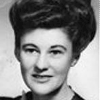AustLit
-
Oriel Gray's place in Australian theatre history as a woman playwright of the 1940s and 50s has been seen as occupying only a liminal space between the birth and the flourishing adolescence of Australia's national theatre. Her plays have been performed in nearly every capital city nation-wide, her writing is of high calibre (as testified to by multiple awards), her themes pertinent to the time and pointing well ahead of it, yet Gray's plays have remained relegated to amateur production and her name to the margins of literary history. In view of post-war Australia's turn to theatre for the development and expression of national identity, Gray's place on the borderzones of both national theatre and national identity must be questioned: what is the relationship between these two types of borderzones, and how does it inform our understanding of Australian drama? By exploring the social spaces Gray herself inhabited, the production spaces available to her plays, and the dramatic spaces that her works made use of, I propose to show how the tensions of national identity are both accentuated and negotiated within these liminal spaces.
This work was undertaken as an outcome of a 2017 internship with AustLit by the University of Queensland Arts student, Jemimah Thomson.
-
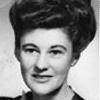 This image has been sourced from Doollee.comSee full AustLit entry
This image has been sourced from Doollee.comSee full AustLit entryOriel Gray lived in Sydney during the early part of her writing career and later re-located to Melbourne. Gray's major output as a playwright was in the period from the 1940s to the 1960s. Her plays are regarded as being ahead of their time due to the complex manner in which they deal with social issues. Gray inventively addressed issues of Aboriginal rights, life in the bush, migrant experience and women's employment.
Her first full-length play, Lawson, based on some of Henry Lawson's short stories, was produced by Sydney New Theatre, in 1943.
-
In the years that followed World War II, a great rallying was taking place in the pages of Australia's literary journals and the columns of its newspapers. An awareness of the nation's emerging sense of self and of the juvenility of its cultural institutions combined to fuel a drive to establish a national theatre. Beyond all other art forms, writers, critics and politicians alike were coming to consider the theatre as the establishment most necessary to and most lacking in Australia's cultural identity.
In September 1944, the question of a national theatre had taken centre-stage in the House of Representatives as a matter of post-war 'reconstruction' in a speech given by Leslie Haylen:
'In dealing with the problems of reconstruction after the war, we must face up to the future of our artistic background. In saying that, I have no middle-class notions; I mean, merely, that we must try to understand the soul of Australia and find the best means of revealing it to the world. ...' (qtd. in Donald Batchelor 61)
Then in 1949 Geoffrey Thomas wrote in Meanjin a stirring account of this soul of Australia: the 'Australian that matters', bold and advancing in 'obstinate defiance' out of its colonial history of rejection and adversity (11). The disturbance and disillusion that rippled across the European continent in the wake of the wars must, according to Thomas, leave untouched the restfulness of this country that has been only 'patiently waiting' for its time (13). With a sweeping grandeur that relegates thousands of years of Indigenous Australians to the 'waiting' zone and casts aside even the enterprising settler as 'different' (11), Thomas proceeds to cut the future of Australian theatre out of the mould of this one significant kind of Australian man.
Meanwhile, the ideological rhetoric was being met by discussion of a much more concrete nature: A. A. Phillips wrote on the tension of quantity and quality required for the development of Australian plays and actors; Leslie Rees on the importance of publication and playwriting competitions for the championing of local creativity; Vance Palmer on the relationships between playwright and audience and the physical theatres available to them. However, when in 1949 British producer Tyrone Guthrie was invited by Prime Minister Ben Chifley to propose a scheme for a government-instituted national theatre, this broiling environment of amateur companies and political shakers was ruled inadequate material for a national theatre by the standard of London's Old Vic and its finely honed audience. The proposal, which called for an import-export scheme in conjunction with British theatre companies, was met with strong dissent ('Are We Ready for a National Theatre').
This space – of burgeoning national pride, of faith in literary powers mingling with an embittering cultural shame – was the space into which Oriel Gray's plays were written and performed.
-
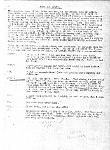 See full AustLit entry
See full AustLit entryOriel Gray's Sur Le Pont is a one-act play set in the wardrobe room of the Talma Theatre in the small French provincial town of Arles in June 1944. The narrative begins shortly after an allied bombing raid has destroyed the armament compound hidden by the German military beneath the town's railway bridge.
The members of the small theatre company, which is currently presenting a revue, become aware that one of them is now passing information to the military police in order to propel his career opportunities elsewhere.
(...more) -
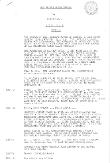 See full AustLit entry
See full AustLit entrySet in the 1940s, Had We But World Enough dramatises the tension that arises in a country town over a teacher's decision to cast an Aboriginal girl as the Virgin Mary in a locally-written school nativity play. The casting is approved by the playwright, a journalist for the town's paper, and also a returned soldier who fought alongside Aboriginal servicemen. During the course of the narrative others find themselves being forced into taking sides, however. This leads to consequences that impact on the characters in different ways - affecting careers, relationships, social standing or conscience.
(...more) -
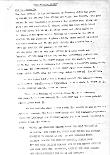 See full AustLit entry
See full AustLit entrySet in the Post Office of the fictional town of Koorora a few years after the end of World War II. A desert settlement of some 67 people that exists mainly to support the building of the Trans-Australian Railway line (which crossed the Nullarbor Plain from Kalgoorlie to Port Augusta), Koorora typifies the railway workers' joke that their trains 'stop at nothing.' The title is a reference to the local belief that birds, apart from the occasional crow, won't fly over or settle in Koorora because it too far from water.
(...more)
You might be interested in...

